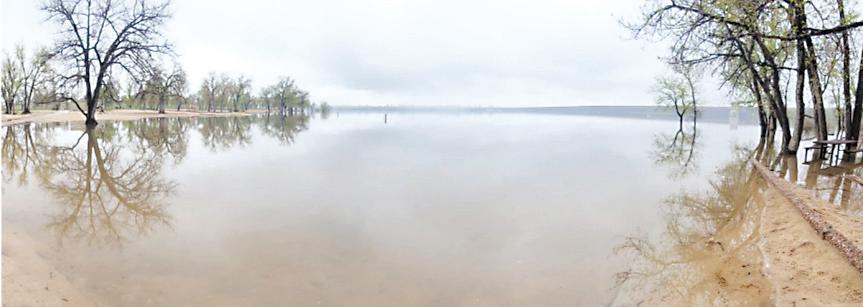
1 minute read
Toxic algae detected in Cherry Creek Reservoir
BY TAYLER SHAW TSHAW@COLORADOCOMMUNITYMEDIA.COM

After discovering toxic algae in the Cherry Creek Reservoir, o cials are not permitting some recreational activities like swimming and paddleboarding in parts of the reservoir.
Colorado Parks and Wildlife, which announced the recreational closure in a July 30 news release, advises that people and their pets avoid contact with the water at the reservoir because a toxic, bluegreen algae bloom was found on the shoreline.
Toxic algae can a ect the liver, skin, or neurological systems of people and pets, according to the Colorado Department of Public Health and Environment.
Colorado Parks and Wildlife said swimming, paddleboarding and wading will not be allowed near the marina and the “west shades” area of the reservoir. ere are warning signs at the recreational closure areas.

“All skin-to-water contact should be avoided for humans and pets,”
Cherry Creek Operations Manager Larry Butter eld said in the release. “Contact with the water could cause minor skin rashes and make pets ill. Dogs need to be on-leash to keep them from drinking or playing in the (algae) bloom.” health department advises that boats avoid areas with toxic algae and to clean sh well and discard sh guts appropriately. e reservoir’s recreational closures came after water samples tested by the state health department showed a high, “red level” of microcystin, an algal toxin. Microcystin is a potent liver toxin and possible human carcinogen, according to the Environmental Protection Agency. It is a type of cyanobacteria, which is also referred to as blue-green algae. ese organisms naturally occur in Colorado but can become prob- lematic when they multiply rapidly, resulting in a dense concentration of cyanobacteria, also referred to as a “bloom,” according to the state health department. e blooms become harmful when the cyanobacteria produce toxins, the state health department said. e state health department’s threshold for water recreational closure is 8 micrograms per liter of microcystin and above, which is considered a “red level,” according to the news release. e samples at Cherry Creek State Park showed concentrations of 10 micrograms per liter.


Colorado Parks and Wildlife said water samples will continue to be collected and tested, and the closures will remain in place until the level of microcystin decreases.
Updates on the recreational closure will be shared online at cpw. state.co.us/placestogo/parks/CherryCreek.








